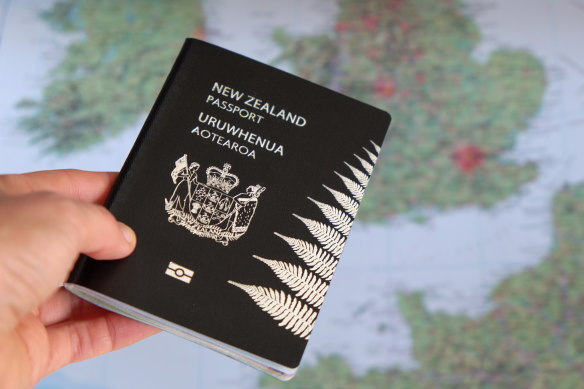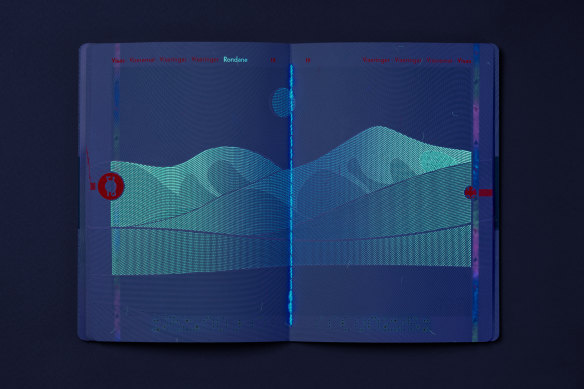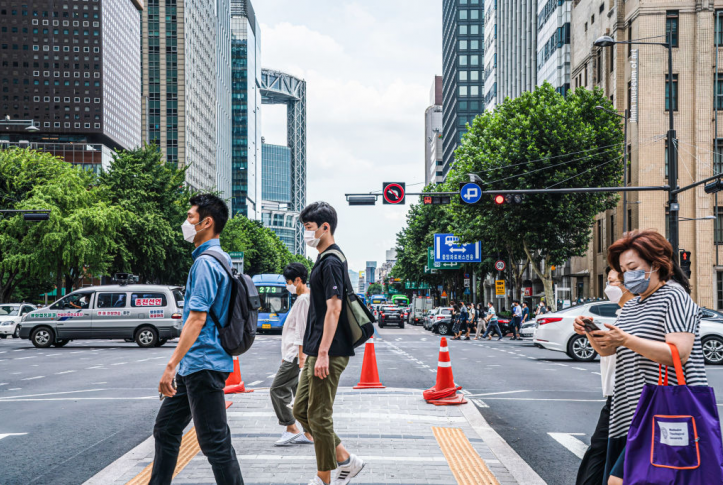New Australian passports might see you delayed at immigration

- by Admin
- October 30, 2024

Watts is enthusiastic about the R Series’ design. “It tells a story about our country,” he says. “When you flick through, it takes you on a journey around Australia, heading north from the capital and travelling in an anti-clockwise direction. It really emphasises the diversity and beauty of our natural landscapes and seascapes.”
The images aren’t just there to look good. The more complex a passport design is, the more difficult it is to forge. And the Australian passport is not the only one that celebrates its most memorable attractions.
Under UV light, a crumbled rock formation that’s part of Victoria’s Twelve Apostles magically reassembles.
Other countries taking the same approach include Switzerland, Latvia and Turkey, whose passport depicts monuments including the Hagia Sophia and the Habib-i Neccar mosques.
The Japanese have found inspiration not in their nature but in their culture. The visa pages in their passport depict the famous 19th-century woodblock prints, 36 Views of Mount Fuji, created by Katsushika Hokusai, including one of the most famous works of art in Japan, The Great Wave off Kanagawa.
The elegant Swedish passport features images of migratory birds – a particularly appropriate metaphor to use in a passport – while Belgium has gone a little more off-beat, choosing to celebrate homegrown comic strip characters including Tintin and the Smurfs.
Closer to home, New Zealand’s passport features the silver fern and intricate Maori patterns as well as a chronological representation of navigation tools throughout the ages.

No mistaking the New Zealand passport with its distinctive silver fern.Credit: Getty Images/iStockphoto
Bahrain won several design awards for its first e-passport, issued in 2023. It depicts historical monuments, astronomical constellations that appear in the skies above Bahrain and a horse, visible under ultraviolet light, that appears to gallop when you flip through the passport.
With so many nations getting creative with their travel documents, passport design is becoming a field in its own right. It offers plenty of challenges, according to Benjamin Stenmarck, of Norway’s Neue Design Studio, who worked on the Norwegian passport design released in 2020.
“This is one of the most important documents you can have as a citizen of a country. It’s the document that legitimises who you are and where you’re from to both your own and other authorities. It needs to hold the highest security level for your authority, but it also needs to work and resonate to you at a personal level. It is supposed to give you a sense of belonging.”
A passport is a document everyone relates to.
“It was only after we got this job that my parents actually understood what I do for a living,” Stenmarck writes in an email – but as with any design brief, there are essential elements, which he defines as clarity, security and a distinct local voice.

Ultra-violet beauty – Norway’s passport.
Like Australia, Norway’s passport focuses on landscapes. Having initially researched historical events, famous figures and typically Norwegian symbols – everything from Vikings and polar bears to the trolls that populate the country’s fairy tales – the design team realised the underlying common denominator was the country’s landscape.
“Historical events, personalities and the development of all our national products have all been influenced by it,” Stenmarck writes. “Our landscape has, quite simply, been a fundamental factor in shaping who we are as a nation today.”
Loading
As with all new-generation passports, Norway uses a range of safety technologies including UV-light technology. Additional images appear on the visa pages when they are viewed under UV light, with the daytime images transformed into night-time landscapes.
It’s a nod to the fact that, as Stenmarck says, “Norwegians live over six months in darkness. We have some delightful months in the summer when the sun only sets for a few hours each night, while in the winter we live in a poetic, but sombre darkness where the sun peeks out for only a few hours each day.”
Australia’s R Series passport – 2.5 million of which were issued in 2023 – uses the same technology. I don’t have a UV light of my own, but fortunately Tim Watts keeps one in his office. While we talk, he switches it on and starts leafing through his passport, describing how each page changes under the light.
“On the Cradle Mountain page, you can see a Tassie devil hidden in the forest, and on the Wineglass Bay page there is an echidna,” he explains. Shine a UV light onto the page featuring Victoria’s Twelve Apostles and one of the rock formations that has crumbled into the sea is magically reassembled, standing proudly in its former place.
Loading
The new passport design also celebrates Indigenous culture and history in its design. “I’m really proud that the passport also features Dauar Island and Waier Islet in the Torres Strait, the birthplace of the Reverend Dave Passi and James Rice, Eddie Mabo’s co-plaintiffs [in the landmark Mabo native title case],” Watts says.
Other intriguing design elements include the watermark – which reproduces an artwork by Indigenous artist Uta Uta Tjangala – to the photo page, made of layered polycarbonate with not one but two photos on it, including one in a raised window.
“Of course I’m biased, but I’ve seen no better passport anywhere in the world than the R series,” Watts says. “The attention to detail, the amount of thought that’s gone into it. This really is a passport that rewards spending a bit of time with it.”
I suggest that in today’s time-pressed world, few people will have time to study their new passport, but Watts disagrees. “There are worse things to do in a passport queue,” he laughs.
The Latest News
-
November 1, 2024Trailblazers who set in motion the Women’s Ashes rivalry | cricket.com.au
-
November 1, 2024Australian tech firms turn to offshoring for growth boost
-
November 1, 2024‘Utterly distraught’: Aussie rising golf star opens up on losing sight in eye after freak accident
-
October 31, 2024PGA Institute launches Workforce Development Solution – PGA of Australia
-
October 31, 2024The Golden Eagle day at Rosehill Races Betting Sites/Apps Offers, Free Promo Codes and Bonuses – 2024





